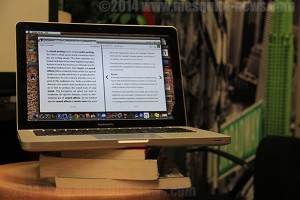
By Emily Rodriguez
To assist in decreasing the cost of pursuing a higher education, Public Law 110-315, the Higher Education Opportunity Act (HEOA) of 2008, was created to give students affordable textbook options.
HEOA, an amendment to the Higher Education Act of 1965, was created to ensure that students have access to affordable course materials by encouraging transparency in the selection and sale of materials while encouraging all involved parties to decrease the overall costs of textbooks so faculty will retain the freedom to select their desired course material for students.
The textbook information provisions of HEOA require that institutions disclose information on their website about each textbook requested by faculty, the pricing for each text, its edition, International Standard Book Number and inform students of how to save money on textbooks.
Texas A&M-San Antonio has implemented an institutional e-book program where any student who enrolls in a course that requires a university e-book will have the cost automatically charged within their tuition and fees.
Approximately 50 percent of courses offered require an e-book purchased through CourseSmart.
The e-books are purchased through CourseSmart, not through Barnes & Noble, the vendor for the university’s bookstore.
Students who sign up for certain courses are required to pay for the e-book without being given the option to opt out in favor of buying the textbook from another vendor.
“The faculty member opts into the e-book program. Once the faculty member adopts it, then it’s a mandatory fee for the students,” said Dr. Tracy Hurley, interim associate vice president for academic affairs.
By not going through the bookstore, does the automatic charge for e-books still comply with the goals of HEOA?
Hurley said that because the e-books are sold separately from university bookstore and are rental books, the university is complying with the rules set forth by HEOA.
Under HEOA, students are not required to purchase textbooks from the university bookstore.
By renting e-books to students the university can charge students automatically for it.
“The program was in place before the HEOA went into effect. The A&M System has looked at the program, they’re aware of the program. As far as I know, it has been looked at,” Hurley said.
According to EDUCAUSE.edu, under HEOA, the university must show a good faith effort to prevent unauthorized distribution of copyrighted materials and show students alternatives to illegally downloading the textbook.
The university switched from e-book providers Vital Source to CourseSmart after a request for proposal bid was offered to different vendors last year as required by the state of Texas.
Hurley said the university made the switch because CourseSmart offers superior service in the areas of price, e-book reader quality, functionality and the affiliated publishers.
Hurley said the university does not pay for the service provided by CourseSmart.
The university was able to provide students with cheaper e-books because they negotiated directly with the publishers.
“The last two years, we’ve saved students about $2 million in the price of textbooks,” Hurley said. “We’ve put out a number of different satisfaction type of surveys at the end of the semester for the last three years. They have all come back as over 70 percent favorability.”
The purpose of the e-book program is to ensure that students would have the required texts needed for each course.
Because the cost is charged directly to tuition, students are able to access their books before classes begin and will not have to wait until they are financially able to purchase the texts.
Hurley said that it is common for students to not purchase the textbooks or make illegal photocopies of them.
“A lot of faculty will say the students will show up a couple of days before the midterm and ask if they can borrow their textbook,” she said. “This is one way of making sure that students have access to the course materials they need to be successful in the course regardless if they can pay for (the textbook) out of pocket.”
Editors’ Note: The Mesquite’s higher education reporting team covers legislative and university policies that impact A&M-San Antonio students. This is the first in a series of articles addressing technology’s impact on higher education.






